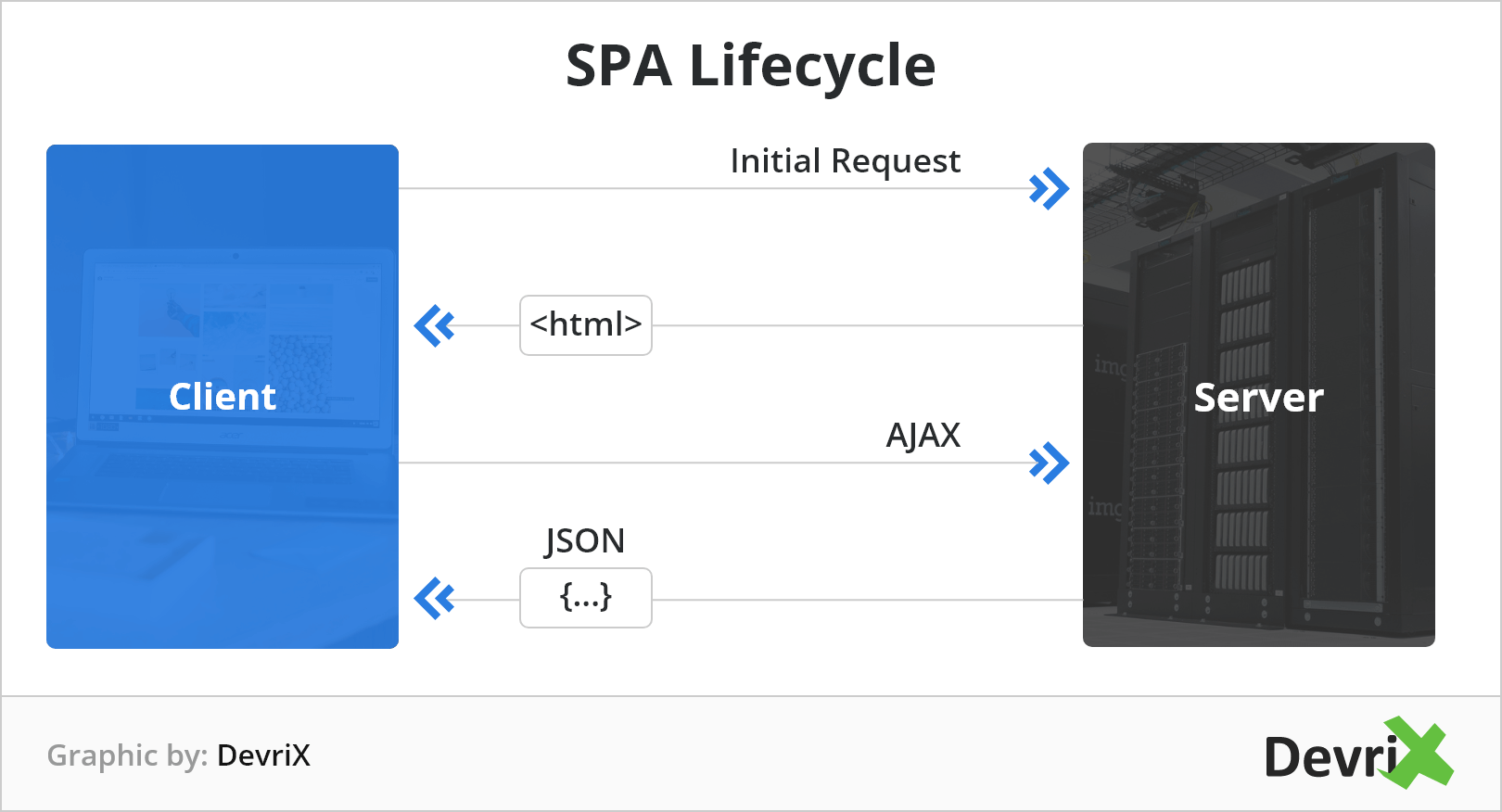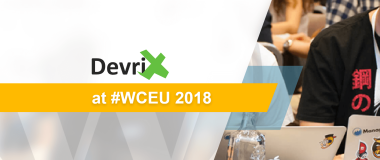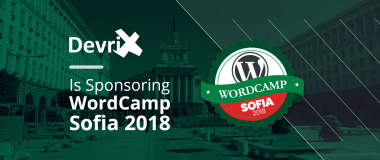The Online Advertising Conference live edition was held on March 27th in Sofia. The conference was live streamed on Facebook which made it accessible to hundreds of people eager to learn the latest tips and tricks from Bulgarian digital marketing experts. This is an annual event which has been organized since 2016 and brings together professionals from various, yet interconnected, industries such as digital marketing, advertising, web development, business, legal and many more.
During the 9-hour long conference, 12 speakers revealed their secrets behind some of the most trendy topics at the moment such as SEO, GDPR, online paid advertising, e-commerce and web development.
Here is a recap of what you can learn from the conference.
“Content Strategy – the Motive Force of Successful SEO” by Dido Grigorov
The conference started with a lecture by Dido Grigorov from Serpact demonstrating to what extent content reflects search engines optimization (SEO). The talk covered all the important aspects and components of content strategy including actionable tips and advice for a successful content creation process as well as useful tools for keyword research.
The speaker explained the importance of matching content with buyer persona’s, the challenges, and the buyer’s journey stage as well. Therefore, having content prepared for each of your ideal clients and buyer journey map is a must.
Grigorov didn’t miss the chance to highlight the importance for brands to be consistent in terms of online presence and communication.
Moving forward, the lecture took a new direction showing off the bridge between content and SEO. As you already know, content has a strong impact on the way search engines rank websites in SEPR. And it was great that the lecturer elaborated on how to sync content and SEO strategies in order to surpass competitors.
Keyword analysis and proper designed semantic core have been described as the components in which marketers should dig deeper. Even though most of the professionals focus on keywords with high search volume, this doesn’t guarantee a high conversion rate, the speaker argued. He suggested Google Search Console as a great source for generating topics and phrases accordingly.
The lecturer also made clear how user behaviour determines what type of content works for a business audience.
Dido’s advice for generating great results: “Invest 30% up to 40% in content creation and 60% in the right distribution”.
Tricks for Optimizing Online Advertising (Paid Promotion) Campaigns on Google Adwords, Facebook and Instagram by Viktoria Todorova
Viktoria Todorova works as a PPC specialist at Netpeak. Her lecture was dedicated to the different opportunities for paid advertising on Google AdWords, Facebook and Instagram.
Google Adwords was one of the “leading actors” in her lecture. Viktoria educated us on how to build and optimize campaigns to achieve greater effectiveness. For instance, she elaborated on how to ensure that a campaign has been planned correctly and targets the right audience. To achieve this, a detailed keyword research must be done. It is important to remember that every keyword group must be placed within different stages of the campaign or even in a separate campaign.
The sales funnel also plays an important role in optimizing a Google Adwords campaign. Visualising the sales funnel and the stages which your consumers are part of will determine the strategy of your remarketing campaign. This is done by analyzing the steps each consumer has made on your website and the exact point where the journey ended. Based on these findings, you should be able to create an audience for remarketing and be able to later convert it.
Viktoria said that Remarketing Lists for Search Ads (RLSA), analyzing session quality data, building Smart Display campaigns and Google Display Network (GDN) audiences also present a great number of opportunities for targeting and remarketing for your business and should definitely have a positive outcome.
Some of the other “protagonists” were Facebook and Instagram. Viktoria suggested focusing on Dynamic Creative ads which allow the marketer to create and test different combinations of text and visuals and optimize the one that works best.
Her advice for Google Adwords, Facebook and Instagram optimization is constant testing and re-shaping campaigns and ads based on results.
“The Practical Use of Google Instruments – Google Optimize, Google Tag Manager and Google Analytics” by Blagovest Iordanov
Blagovest Iordanov is a product manager at the leading Bulgarian digital agency Net Info, Adwise.bg and Sravni.bg. His lecture explored the practical use of Google Optimize, Google Tag Manager and Google Analytics.
The lecture started with a short, but detailed description, of what features each tool offers and how to use them effectively to increase the profitability and online exposure of your business.
After a demo of how to connect Google Analytics with Google Optimize, the speaker answered all concerns and questions regarding working with these tools. He also gave tips for driving great results and performance regardless of the size of one’s budget.
Iordanov also compared the free and paid version of Google Optimize, taking into account all advantages and disadvantages. However, he didn’t limit the lecture only to Google tools and additionally suggested a few free alternatives for SEO including Yandex and Piwik.
Google’s Featured Snippets by Nikola Minkov
The next lecture, which definitely became one of our favourites, was given by Nikola Minkov, who is the CEO of the SEO agency Serpact. The focus was brought to Google’s Featured Snippets – what they are, what types of snippets exist, what is their impact on the website traffic and most importantly how to create them.
The speaker described 4 types of featured snippets:
- Paragraph snippets (50,8% of SERP)
- Bullet Lists snippets (27,2% of SERP)
- Table Snippets (2,9% of SERP)
- Others (19,9% of SERP)
Nikola also shared with us the most searched topics on Google for 2017.
 Source: Online Advertising Conference – NetPeak 2018. Lecture by Nikola Minkov
Source: Online Advertising Conference – NetPeak 2018. Lecture by Nikola Minkov
The lecturer also pointed out one of the reasons for the increasingly growing popularity of featured snippets – the rising trend of voice search. Virtual personal assistants such as Amazon Alexa, Google Home, Google Assistant, Cortana and Siri draw their answers from the search engines, reading or showing the first ranked answer a.k.a the Google Featured Snippet. Therefore, having listed a piece of information from your website shown as a zero-result drastically increases the CTR and the popularity of your website.
“Building and Developing an Online Store – Stages, Guidelines and Common Mistakes” by Ilian Ilkov
The founder of the Bulgarian online baby store baby.bg gave a lecture on how to develop and expand a successful e-commerce website. All attendees of the conference had the chance to get some insider advice.
Ilian Ilkov explained how he managed to multiply more than 600 times the annual revenue of his online baby store in only 4 years. In 2013, the business generated annual revenue of BGN 2143 (USD 1,344) and over BGN 1 505 000 (USD 943,515) in 2017.
The lecturer emphasised a few factors which determine and contribute to the great success of an online store – a dedicated and hard-working team, a well-considered business plan and strategy.
He further elaborated on how e-commerce has changed over the past few years, particularly in Bulgaria, and what opportunities and challenges it brings.
The speaker outlined three stages of e-commerce website development and expansion – preparation, launch and expansion.
Starting with the preparation, business owners focus on talent acquisition, selection of products and services, competitive advantages, market research, choosing the best software, domain and design, and hiring freelancers or agencies.
The best time to make changes and adjustments to your e-commerce website is during the second or launch stage, according to Ilian Ilkov. This, undoubtedly, should be a result of many experiments and analysis.
The third and final stage, expansion, is committed to looking for more investors, researching and adopting new business models and legal frameworks.
Ilian explained that the most common mistakes, made by e-commerce website owners, are relying on online shopping inertia, underestimating the importance of good software and applying an outdated marketing model.
“Why and How to Use Video as Part of Your Content Strategy” by Peter Vladimirov
Of course, it would be hard to believe if no one spoke about the new king of Content Marketing – Video. Peter Vladimirov, a partner at Interactive Share, who chose to focus on the video topic and its growing significance in the content marketing.
During his 40-minute lecture, the speaker brought to light to what extent video has transformed the advertising landscape today.
Vladimirov stated that it is no surprise that mobile and desktop advertising outperformed TV advertising. In 2016, digital advertising generated bigger revenue than traditional TV advertising for the first time in history, according to AdAge.
The lecturer revealed why video has become one of the most preferred advertising formats, “A company can communicate its mission, vision and principles in a 15-second-long video. This is extremely important for establishing a consistent brand identity, recognition and recall”.
The expert explained the process of creating a video from scratch, elaborating on how to invest smartly in distribution and drive big results while spending less.
We noted two actionable tips which definitely could be implemented into our own content strategy.
- A Call to Action (CTA) button in the video
- Invest more in the distribution rather than in the creation of the video

“10 Life Hacks for Growing from a Small to a Medium Business with the Help of Online Marketing” by Justine Toms
In this lecture, Justine Toms from ABC Design and Communication group shared 10 proven-to-work life hacks which she has identified throughout her 20-year long career in digital marketing.
Again and again, the importance of knowing your audience was pointed out. The lecturer shared and explained how to build a buyer persona’s profile with the help of customer reviews, testimonials and surveys.
The other elements described play a significant role in the growth from a small to medium-sized business which included the right content and the company’s presence on multiple channels. However, Justine warned that being active on all existing channels can be quite a risky approach. She suggested that the right channels to be present on, are only those which are relevant to and used by your audience.
Although logistics is an offline activity, it impacts the success of online marketing. Therefore both the logistics and marketing teams should work in collaboration to deliver high-quality services.
Justine didn’t miss the opportunity to emphasize the impact of regular updates have on business growth. She advised all businesses to make sure they regularly update their websites and social media accounts.
When was the last time you updated your website?
“SEO for Single Page Applications (SPA)” by Simeon Emanuilov
The conference continued with Simeon Emanuilov, SEO specialist from Netpeak, who spoke about Search Engine Optimization (SEO) for Single Page Applications (SPA).
The lecture was aimed at explaining how to enable bots to easily crawl and index JavaScript content and to give new SEO tips and know-how.
The speaker introduced the topic with a short description of the difference between HTML, AJAX and JavaScript (JS). Followed by a breakdown of the content rendering process and identifying what exactly prevent bots from indexing JS content.
“Bots can only “see” static content”, explained Simeon Emanuilov and suggested three solutions to this.
- Rendering via external service
- Rendering on the server itself
- Rendering by the search machines/engines
Simeon underlined the fact that SPA doesn’t reload the page and sometimes Google Analytics cannot measure new page visits. Therefore, Google Analytics could send you the wrong data about the traffic to your website. He recommended double-checking additional Google Analytics settings for measuring traffic.
Targeting with Google AdWords: Tips and Best Practices by Dimitar Dimitrov
The next speaker was Dimitar Dimitrov who is a founder of the Digital Marketing Agency Inbound.bg. His lecture served as a continuation of Viktoria Todorova’s talk.
Dimitar gave us a deeper insight into Google AdWords core, new interface, features, pros and cons. He described the tool’s new interface as “colorful” yet with a lot of bugs to be fixed. He also suggested a few actionable tips on what direction to take when creating a Google Adwords campaign, presenting his must-go-through plan:
The first stage is to determine the campaign goals and objectives – What do we want to achieve with this campaign?
The next step is to write down a plan – How these goals will be reached?
The third step involves design and creation of the creatives – visuals and text.
After we have decided on what our goals are, how to reach them and the actual elements of the advert, it is time to test the campaign before officially launching it.
The lecturer didn’t miss the opportunity to remind the attendees to pay extra attention to the cross-device conversion metrics. He explained that by default, Google Analytics detects only the device from which the last click has been made. Therefore, you won’t be able to know if the user has interacted with the ad from a single or from a few devices.
To make sure you know if your customer has viewed and clicked your ad from more than one device, don’t forget to look at the cross-device attribution reports.
The lecture also gave instructions on how to generate results with Google dynamic search ads, how to set and track the right KPIs, how to target users who are visiting your competitors’ websites, how to master the Gmail ads, etc.
In terms of planning, testing and reshaping campaigns, Dimitar shared with us his golden rule which states: “If it works, do not touch it!”.
GDPR by Nikolay Kiskinov
One of the most discussed topics recently has been the new General Data Protection Regulation (GDPR).
Bulgaria, alongside 27 other countries members of the European Union, will be affected by the GDPR. So having such a lecture as part of the conference was very useful for everyone.
Nikolay Kiskinov, the managing partner at Vladimirov&Kiskinov, explained in detail how the new law will change the way Bulgarian businesses operate and what new training will be needed for the employees across all industries. He also elaborated on how GDPR is actually changing the whole Internet.
As the conference already had few lectures focused on e-commerce, the speaker decided to give an example how to implement GDPR to an online shopping website.
“AMP – Revealing the Mystery Around This Topic” by Peter Nikolov
Peter Nikolov, who is the CEO at Mobilio, gave an interesting talk about AMP. He had recently attended the AMP conference 2018 in Amsterdam and shared with everyone how his experience and what he had learned changed his perception towards AMP.

Peter’s talk was focused on providing valuable knowledge about AMP and all the advantages it brings. In his opinion, the AMP pages’ best asset is the loading speed.
The lecturer also explained how AMP will change the internet and begin a new era in web development.
The lecture provided useful tips on how to work with AMP JavaScript, AMP HTML, AMP Discovery, AMP Cache and others.
He also shared his take on a few popular concerns, related to using AMP, such as “AMP ‘steals impressions” or “AMP is suitable only for news sites”.
“4 Methods for Programmatic Advertising in Bulgaria” by Martin Popov
The conference was closed by Martin Popov and his lecture about different opportunities for programmatic advertising in Bulgaria. Martin is the CEO at Digital Agency Interactive Share. He explained his suggestions with observations and examples from his own career.
Martin described both advertising approaches – Cost per click (CPC) and Cost per 1000 impressions per ad (CPM) and explained why CPC is often much more cost-effective than CPM.
He analyzed the reasons behind the growing popularity of programmatic advertising in Bulgaria in the past few years. He also recommended to the marketers some of the most reliable platforms for programmatic advertising reporting and shared all the pros and cons of each one.
The biggest Digital Marketing problem nowadays, according to Martin Popov, is channel attribution to which he provided some useful tips on how to overcome this challenge.
To launch a successful programmatic advertising campaign, Popov outlined 5 important elements to consider – the type of campaign, budget, data, creative and testing – a lot of testing.
Wrapping Up
This year’s Online Advertising Conference gave valuable insight into the digital marketing world. We learned a lot of new stuff and got new ideas. We would like to thank all speakers and organizers for providing such an educating conference and we are looking forward to the next edition.












